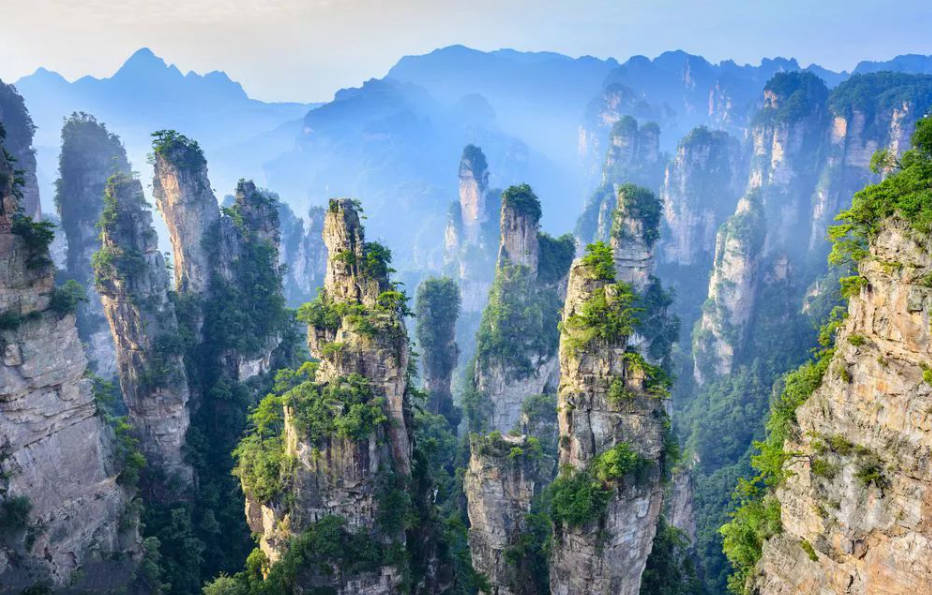Explore the Rich Biodiversity of Zhangjiajie National Forest Park: A Natural Wonderland
Zhangjiajie National Forest Park is the first national forest park in China, located in Wulingyuan District, Zhangjiajie City, established in 1982, with a total area of 4,810 hectares, and its predecessor is the Zhangjiajie State Forestry Farm. Zhangjiajie National Forest Park is also a World Natural Heritage Site, a World Geopark, and a national “AAAAA” level scenic area.
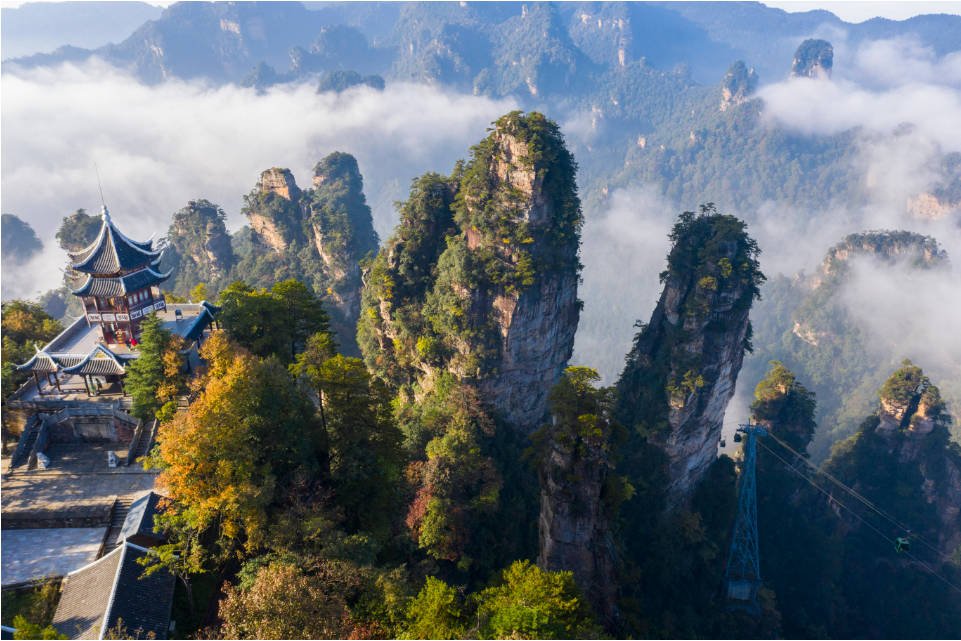
Zhangjiajie National Forest Park has high peaks and dangerous cliffs. Cili County of the Republic of China recorded “ten thousand stone shoots, high show into the sky, stone and ochre red, even the peaks of high and low, diffuse all bias, strange A world”. Thousands of strange stone peaks such as bamboo shoots standing, the vertical height of the peaks is generally more than 200 metres, especially the world convinced the vertical height of the Golden Whip Rock in about 380 metres. Thousands of rocky peaks in the sky with different appearance, like a person, but also exquisite. “To people as a metaphor, such as the general’s command, husband and wife of the long goodbye reunion, sisters of the joint conversation, children and grandchildren of the Luo in the knee. Beasts as a metaphor, such as the tiger’s roar, the eagle’s wings fly high, the lion’s south of the king, the monkey’s north of the foraging. When the sun rises, all the birds sing in harmony, and when the clouds suddenly merge, all the mountains hide their shapes. The cage has a hundred forms, sudden changes. Danqing not enough to describe its shape, poetry and literature not enough to book its cause, cover the ghostly work of God, made in heaven, not man can imitate its one hundred per cent also”.
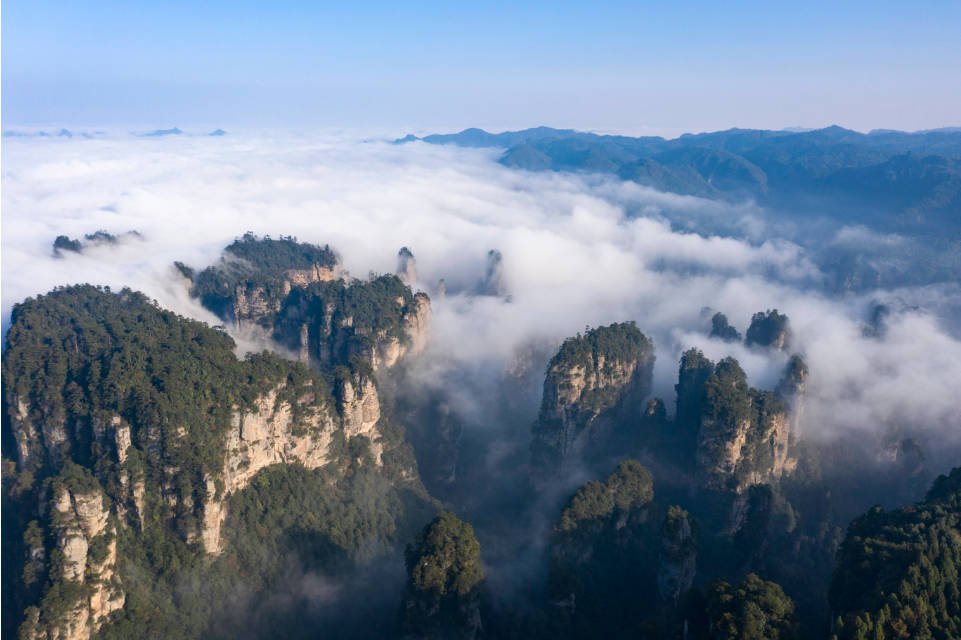
Zhangjiajie National Forest Park with “majestic, strange, dangerous, wild, secluded” in one, the integration of “thousands of strange, thousands of forms, thousands of charming, style,” in one, is a unique book made in heaven, ghosts and God’s work of the masterpiece. Writer Sun Sun praised her: “the beauty of Mount Huangshan Guilin, Kuanglushan Nanyue’s show”. Zhu Changzhong, professor of Tsinghua University and famous landscape architect, praised her: “As far as the mountains are concerned, Zhangjiajie should be the first strange mountain in the world”.In May 1992, Dr Sancerre and Dr Lucas, senior advisors of UNESCO World Natural Heritage, wrote in the technical evaluation after a field trip to the peaks and valleys of Zhangjiajie National Forest Park: “Comparable in landscape to several National Parks and Earth Monuments in the western United States, such as Bryce Canyon, the Grand Canyon of Colorado, Grand Canyonlands, and First Peak, with most of the peaks displaying more vertical contours than those of the American and Australian heritage sites.”
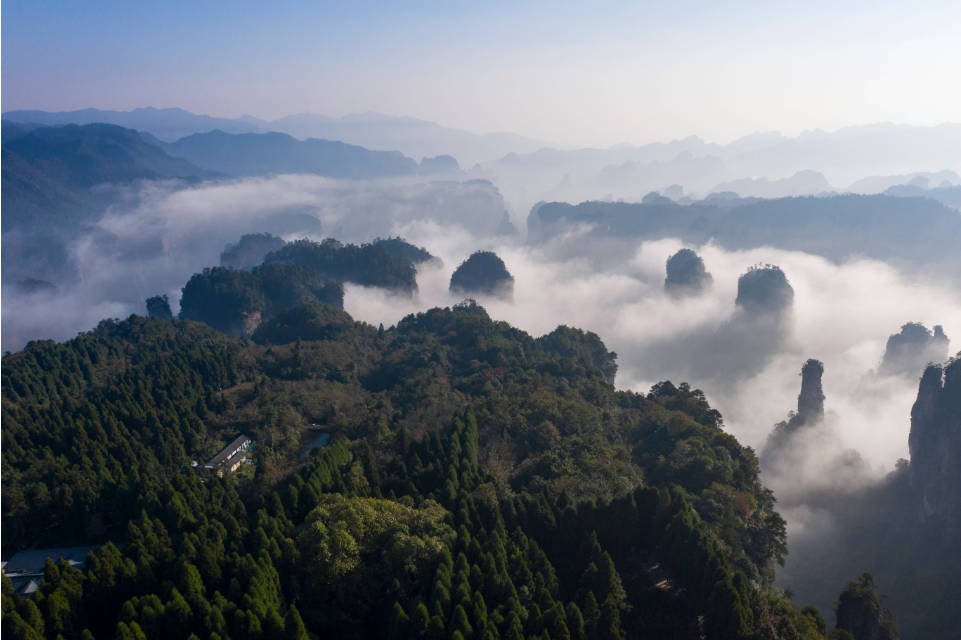
The formation of the Zhangjiajie National Forest Park’s peculiar quartz sandstone peaks and canyons has taken a long time. 1.5 billion years ago, at the beginning of the Earth’s trough, quartz sand grains dominated the sediments washed into the trough, providing the raw materials for it. In the middle of the orogenic movement, the sediments rose to the surface of the sea to form mountain ranges. 600 million years ago, the mountain ranges were stripped by the wind and rain to form a flat ground, entering the stage of terrace. 380 million years ago, the earth’s crust subsided, and the area around Zhangjiajie was reduced to a shallow sea, and a large number of quartz sand grains mixed with a small amount of sand and sediment were re-deposited to more than 1,000 metres thick, which formed the “embryo” of the quartz sandstone that we see today. “. Earth’s old man’s footsteps to the Permian, Cretaceous era, due to fractures, folds, turbo spinning and twisting and other internal stresses, shaped the Forest Park mountains of the rough. In the long history after that, the old man with the hammer of thunder, rain chisel, wind adze, snow axe, frost saw, day after day, year after year, sparing no effort to carve, polish and polish, resulting in today’s world of beauty. Famous geologist Professor Chen Guoda believes that: Zhangjiajie National Forest Park quartz sandstone peaks and forests of the aesthetic value of the Danxia Peak Forest, Colorado Peak Forest, Castor Peak Forest, basalt peaks and forests, soil and wind erosion of the stone forests are inferior.
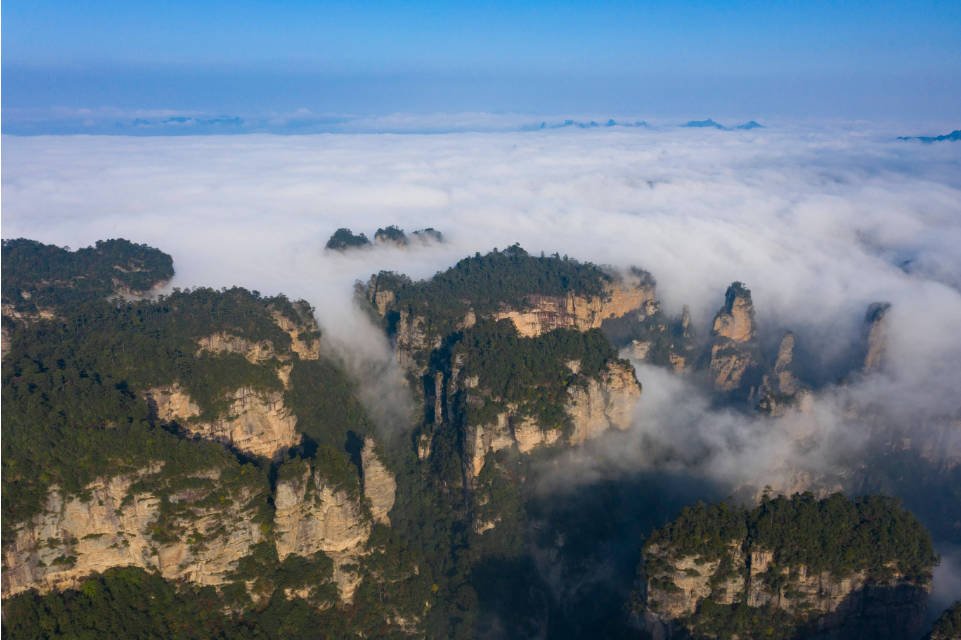
Zhangjiajie National Forest Park enjoys the reputation of “three thousand strange peaks and eight hundred beautiful waters”, with numerous waterfalls and streams. Especially Pipa Creek, Flower Creek, Golden Whip Creek, Mining Cave Creek and Sand Dagger Gully are the five streams. The water of each stream is crystal clear, spouting pearls and splashing jade. The Golden Whip Creek is a boutique scenic spot in the forest park, with more than 400 stone peaks towering against each other on both sides of the creek, standing tall, forming a 5.7-kilometre-long canyon. The peaks have a hundred turns and the stream has a thousand curves. The peaks are scattered, and the stream is undulating. The mountains follow the water and the water turns around the mountains. The poet Liang Shangquan was overwhelmed by the magnificent and infinite vitality of the Golden Whip Creek and wrote a poem saying: “Clear running water and green mountains, the mountains are like paintings and the people are like immortals. Immortal if you walk in the painting, step by step a look at a heavy sky”. More peculiar is that the altitude of more than 1100 metres of the top of the Yellowstone Walled City has a heavenly spring, year-round turquoise water inexhaustible. There are really good flowers in the flat land and good water in the high mountains.
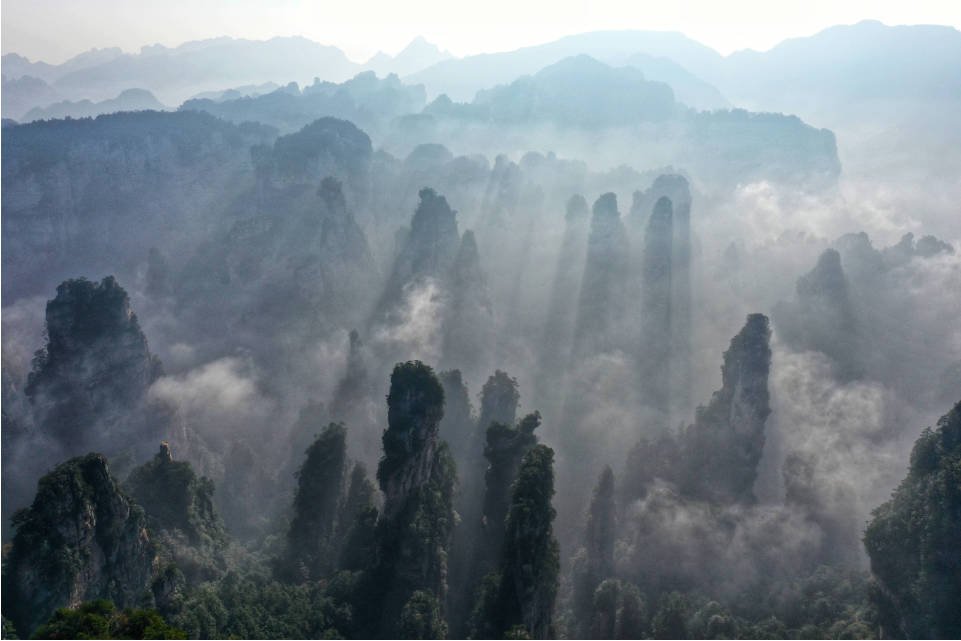
Zhangjiajie National Forest Park is not only a peculiar landform, beautiful scenery, rich species, intact vegetation, and is a multi-ethnic residential area with the Tujia as the main body, the folklore and folklore of the fragrance and intoxicating. Such as Tujia marriage customs, Tujia sacrificial customs, Tujia New Year’s Eve customs, Tujia songs and dances, etc., so far still maintains the original ancient style and charm. Especially the Tujia pendulum is known as the Tujia unique magnificent epic and the treasure of Tujia folk literature and art. There is also the Miao Maugus Dance, which is known as “the farthest source of Chinese dance and the living fossil of primitive theatre”. Minority cultures with long history and authentic minority styles are very intriguing. Therefore, it is said that Zhangjiajie National Forest Park is not only a garden of forest, but also a garden of ethnic culture.
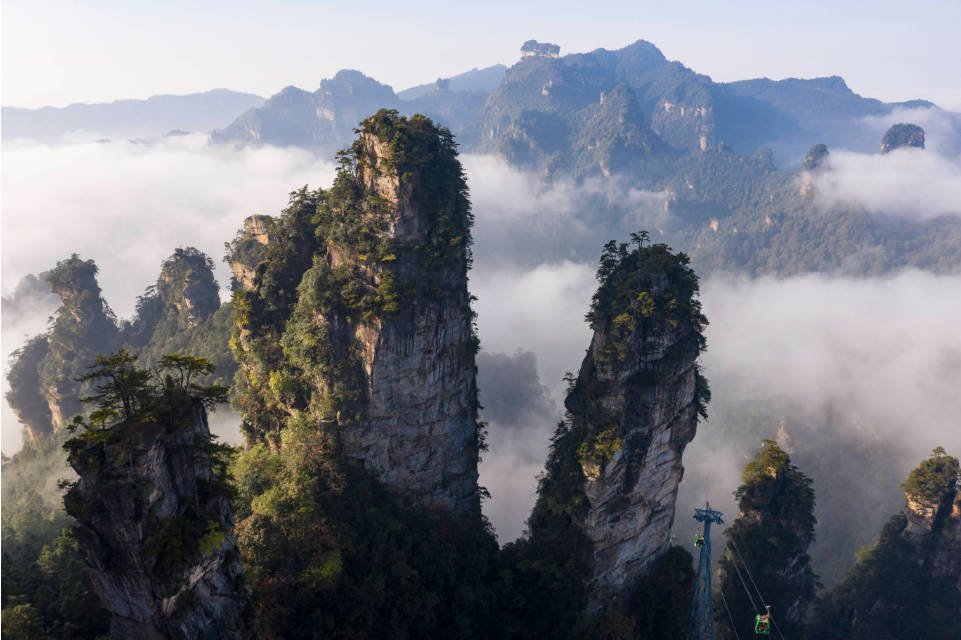
Animal and Plant Resources
Zhangjiajie National Forest Park is a huge biological gene pool, which is called “earth monument”, “natural museum and natural zoo”. The forest coverage of the park is as high as 97.79 per cent, with more than 1,000 kinds of plants, including 517 species of 93 families of woody plants, which is more than double the number of tree species in Europe, including 191 kinds of trees. There are 21 species of national-level and second-level protected wild plants in the park, including five species of dove-tree, burl tree (bell-calyx wood), balsam tree, southern red bean tree and red bean tree in the first level, and 16 species of white bean tree, basket tricuspid tree, Baton Mullein, gooseberry (laburnum), Cephalotaxus, Minnan, palms, purslane, rowan, umbrella flower wood, pseudo-mono-mullein, hairy red toon, Houpodendron, concave-leafed Houpodendron, eucalyptus, beech wood in the second level. Professor Wu Zhengyi, a famous botanist, said: “In ancient times, Zhangjiajie was right at the centre of the range of subtropical broad-leaved evergreen forests that dominated the south-eastern slopes of the Himalayan Mountains, all the way to southern Japan. Its plants and forests can represent the face of China’s Yangtze River Basin forests ……”.
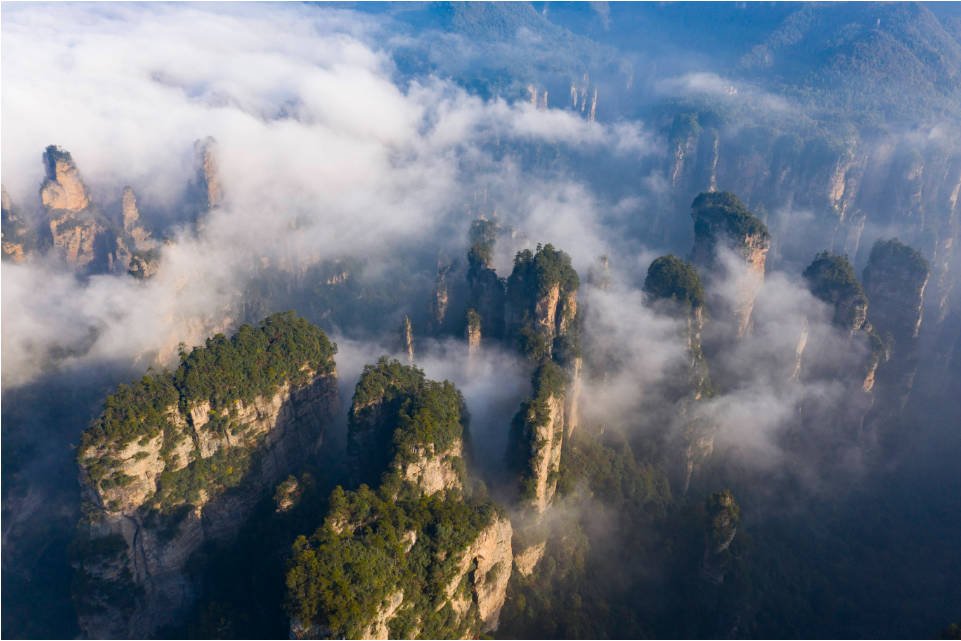
Zhangjiajie National Forest Park vegetation according to the difference in elevation was distributed in a band, the top of the mountain peaks are almost all resistant to dry barren, strong wind resistance of the Wuling Pine, they are rooted in the wall, strong and upright, verdant and colourful, presenting a picture like a national painting of the magnificent scenery.
Altitude of 1000 metres above the hillock to the Wuling pine, oak, short handle? Tree for the upper wood, long-stamen rhododendron, lantern flower, tooth edge hanging bellflower for the lower wood, composed of a group or sheet coniferous broad-leaved mixed forests, the understory live ground cover plants are very few, thicker layer of dead leaves, the trunk is more lichen. On the slopes of the same height or in the bitter part of the mountain streams, broad-leaved mixed forests are dominated by many kinds of trees of the genus Quercus, multi-veined green justices, fragrant birches, linden trees, many kinds of goosefoots, water green justices and other broad-leaved mixed forests, with a thicker understorey of dead ground cover. Shrubs are mostly red fennel, rhododendrons, purple golden oxalis, and vermilion root. Grass and trees are mixed, in spring there are red flowers dotting the green bushes, and in autumn there are frost leaves dyeing the red layer of forests, giving people a fresh and thick sense of beauty.
Elevation of 800 metres to 1,000 metres section, the sunny slopes and wider valleys to orchid fruit trees, Wisu, lack of calyx maple, hairy red toon, hairy cumulus, persimmon, lampstand, hazelnut is dominated by the shady slopes are mostly for the Chinese sage, wood ginger and other camphoraceae plants. Grasses and trees are dominated by the cleft-leaved begonia, Urticaceae, Orchidaceae, and seven-leaved dicotyledonous flowers. This section of the valley slopes, due to the near side of the rocky peaks stand, the side of the light is not strong, the soil is fertile and deep, the formation of a very good forest environment, the trees are tall and straight, straight up, was a small piece of group distribution, even the slopes connected to the valley, the changes are varied, mysterious, pleasing to the eye, is the park’s most distinctive section of the forest, but also the most prospective of the forest landscape.
On the slopes of valleys with an altitude of 600 to 800 metres, there are large artificial fir forests, and on the edges of the fir forests and the peaks and ravines of the streams and valleys, there are mostly mixed coniferous and broad-leaved forests such as horse-tailed pines and conifers, as well as mixed broad-leaved forests such as camphor, chinkapin, camphor-leaved maple, and black heath. Shrubs are mostly rhododendron, peppercorn, sweetgum, black lacquer tree, saltbush, and huckleberry. The bank of the stream is dominated by heather, maple poplar, green willow, silver magpie tree and hairy red toon. The undergrowth is mostly angular leaf sheaths, Batong pods, sagebrush, bitter ginseng, and so on. Herbs have calamus, dragon’s tooth grass, lobster flower and so on. This section is located at the foot of the peaks, the soil is thick and fat, and not far from the streams, the climate is humid, the forest trees and flowers and grasses are exceptionally lush, like a green maze.
Zhangjiajie National Forest Park (Zhangjiajie Nature Reserve) has a lot of exotic flowers and plants, often the mountain flower firm, beautiful flowers. There are dove flowers, camellias, magnolias, hydrangeas, cherry blossoms and so on. Herbs include lobster flower, jade hairpin flower, orchid flower, fenghuangxian flower and so on. There are more than 200 kinds of exotic herbs that can be used as medicine, and the famous ones are Tianma, Huanglian, Anacardium, Huiyangcao, Poria, Hepatica, Dangshen, Xinxin, Panax ginseng, Yunshen, Dihuang, Guangmuxiang, Appendicia, Huangjiagang, Lily of the Valley, Bai Shao, Baiyao, and Baiyi, and so on.
There is no lack of old and famous trees in the park, and according to the survey, the longest tree is 350 years old. Only Yuanjiajie village under the ping group of pine hillock has broad-leaved forest mixed Wuling pine more than 10 hectares, the age of the trees are in the 150 years up and down, the average diameter at breast height of 70 centimetres, the average height of the tree is about 35 metres, for the rare group of ancient pines.
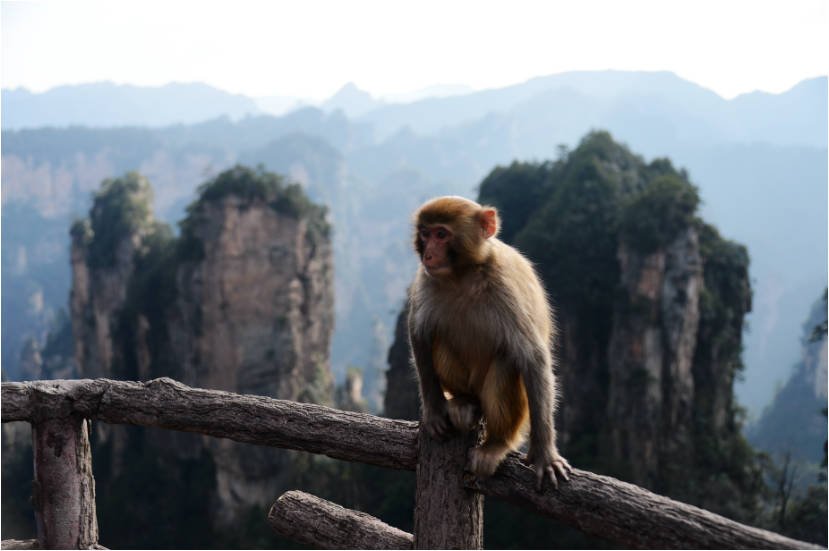
The park’s animal resources are also very rich. According to the local Zhen’s genealogy records, the Qing dynasty Qianlong Zhangjiajie “grass and trees smooth and lush, wilderness, the road are all goat trails, rugged and dangerous, animal hooves and bird trails crisscrossed in the road. The mountains are bears, muntjacs, rags, deer, jackals, wolves, tigers and leopards beasts, in groups, salty as if they have sex. The water is a double-scaled stone crucian carp, heavy lips of all colours of fish, the taste is crisp and sweet”. According to the survey, the park only terrestrial vertebrates there are 156 species in 22 orders and 59 families, belonging to the national one or two types of protection of animals such as baby fish, macaques and more than 50 kinds of animals, listed as a key protection of Hunan Province, there are 22 kinds of animals such as red foxes, herons and so on. Rare and precious birds include red-bellied pheasant, long-tailed pheasant and golden pheasant, and precious animals include musk, rhesus monkey, rock sheep, otter and flying squirrel.
